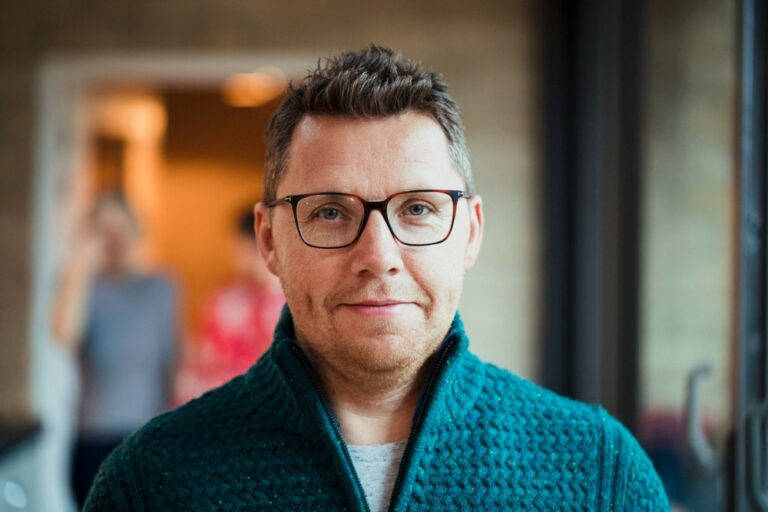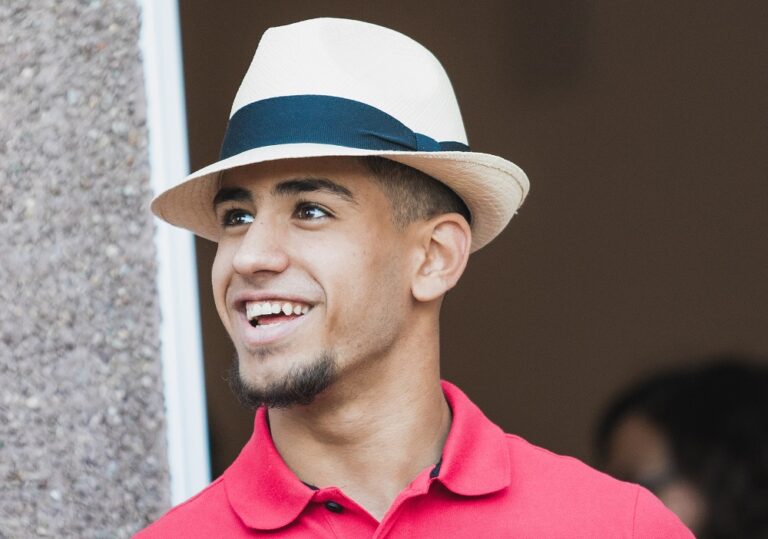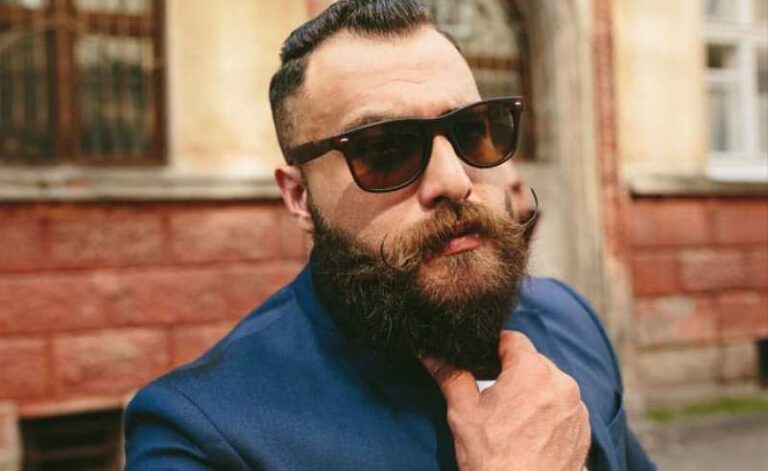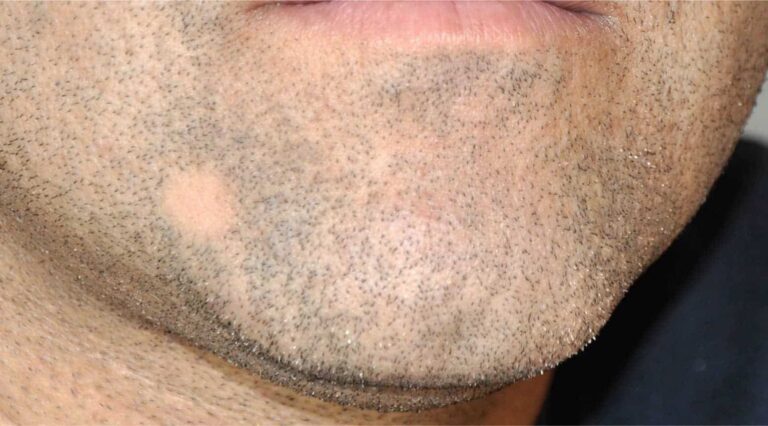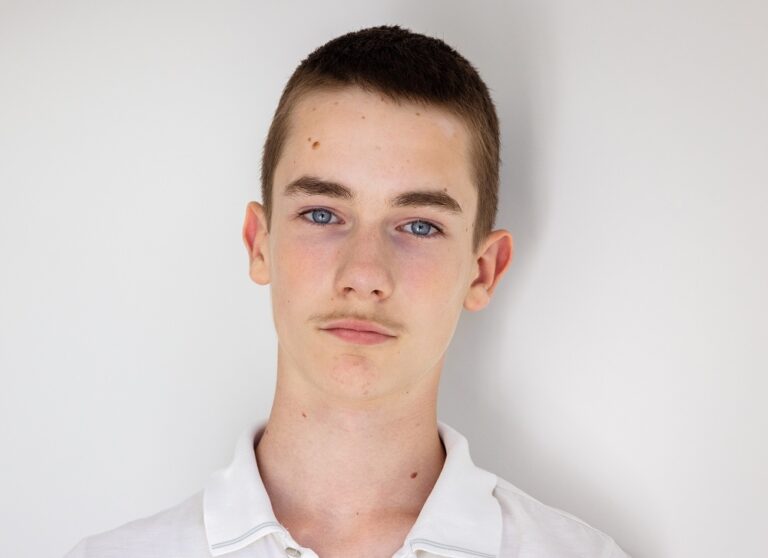Are Minoxidil Beard Gains Permanent or Just A Temporary Fix?
Are you ready for a game-changing blog post that’s gonna knock your socks off? You better be! Because this blog post will answer the burning question of beard lovers, “Are minoxidil beard gains permanent or just a temporary fix?”
In the red corner, we have the skeptics, doubting the long-term effects of minoxidil on beard growth. In the blue corner, we’ve got the believers, swearing by Minoxidil’s ability to bring forth epic beards.
So, let’s settle the score on this contentious issue once and for all. We will dive deep into the nitty-gritty and explore if your minoxidil-influenced beard is here for the long haul or just a temporary guest on your face.
Are Minoxidil Beard Growth Permanent?
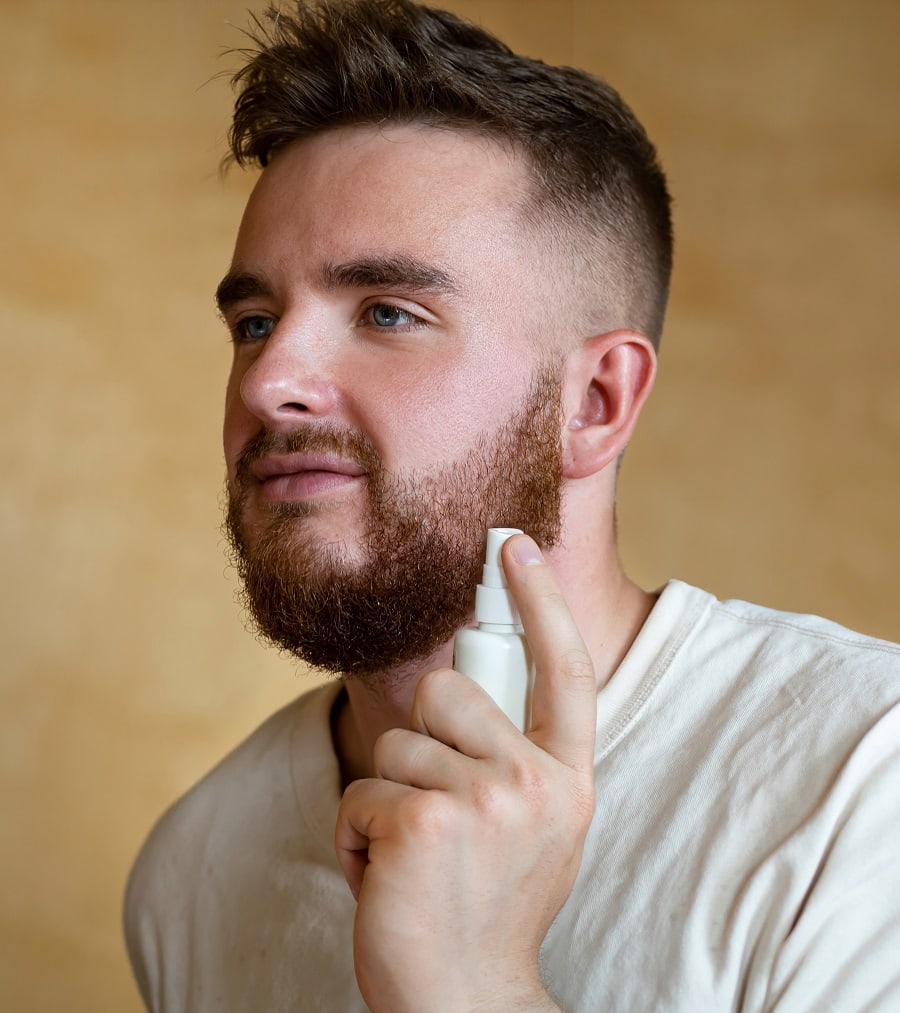
To give you a straightforward answer: Yes, minoxidil beard gains can be permanent, but this depends on several factors. If you consistently apply minoxidil and your facial hair has reached the terminal stage, the gains are likely to be permanent.
But individual factors like genetic potential, hormones, and proper beard care also determine the permanency of your minoxidil-enhanced beard.
Minoxidil has been proven to stimulate the growth of new hair follicles, and once they’ve transitioned from “vellus” (the weak, peach fuzz kind) to “terminal” (the strong, beard-worthy kind), they’re here to stay. So, in a sense, the gains are permanent.
The bad news: You’ve got to keep using Minoxidil to keep those new hairs coming. If you stop, the growth of new follicles will halt, and you might even lose some of the progress you’ve made. Bummer, I know.
Factors Affecting the Permanency of Minoxidil Beard Gains
Let’s get down to the factors that influence the permanency of your minoxidil-induced beard gains. Knowing these factors will help you understand what to expect and how to make the most of your beard journey.
Genetics
Let me give you the lowdown on how minoxidil works. For those who are balding, minoxidil is like their knight in shining armor. It maintains hair growth but doesn’t stop the balding process itself. So, they gotta use it for life to keep their hair game strong.
But when it comes to facial hair, minoxidil isn’t just a maintenance treatment. It actually helps unlock your genetic potential for beard growth.
Now, here’s the kicker: when you use minoxidil for facial hair growth and your hair becomes terminal (that’s the fancy word for fully matured), those gains are permanent.
That’s right, fellas! Your facial hair isn’t being attacked by those nasty hormones like the hair on your scalp, so once it’s there, it’s there to stay.
Terminal vs. Vellus Hair
Your facial hair needs to be terminal for the gains to be permanent. That means the hair follicles need to be deeply rooted and mature enough to survive without minoxidil’s help.
Once they reach that stage, you can kiss your patchy beard goodbye and say hello to your newfound beard glory.
The permanency of minoxidil beard gains largely depends on whether your facial hair has reached the terminal stage or is still in the vellus stage.
Terminal hairs are thick, deeply rooted, and here to stay, while vellus hairs are fine, wispy, and may eventually fall out.
Minoxidil helps transition vellus hairs to terminal hairs, which means that once your facial hair reaches the terminal stage, the gains should be permanent.
Consistency in Application
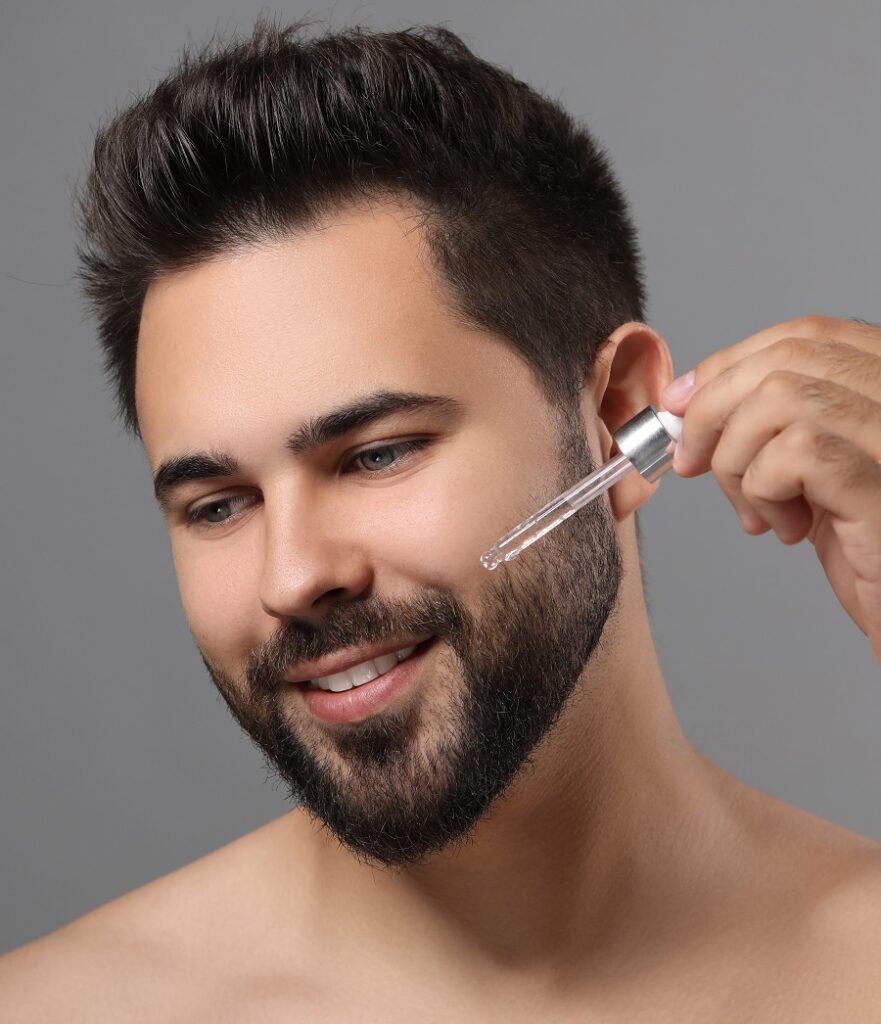
Minoxidil’s effectiveness relies on your consistency in application. If you stop using it before your facial hair has reached the terminal stage, you might lose some of the progress you’ve made.
To ensure permanent gains, use minoxidil consistently for at least 4-6 months, or as recommended by a healthcare professional.
Individual Genetic Potential
Your genetic potential plays a significant role in determining the permanence of your minoxidil beard gains.
Some people might experience a complete transformation, while others may notice minimal changes. Ultimately, minoxidil can only help you achieve the beard potential that’s coded in your genes.
Hormonal Factors
Hormones, mainly testosterone and dihydrotestosterone (DHT), are crucial for beard growth. If you have a hormonal imbalance or a deficiency that hinders your beard growth, the permanence of minoxidil gains might be affected. It’s essential to address any underlying hormonal issues to maximize your beard growth potential.
Proper Beard Care
Finally, taking good care of your beard is essential to ensure the permanency of your minoxidil gains. Regularly wash, condition, and moisturize your beard, and trim it to maintain a neat and healthy appearance.
Proper beard care will not only maintain the gains you have made with minoxidil but will also promote overall beard health.
Minoxidil is believed to stimulate hair growth by dilating blood vessels, increasing blood flow, and providing more nutrients to hair follicles. This can lead to thicker, healthier hair growth.
The U.S. Food and Drug Administration (FDA) initially approved Minoxidil as a treatment for high blood pressure. Hair growth was discovered as a side effect, leading to its approval for treating hair loss in 1988.
Minoxidil is FDA-approved for scalp use, but not specifically for beards. However, many brave bearded souls have used it off-label and reported great results.
Common Side Effects of Minoxidil
Using Minoxidil for beard growth isn’t all sunshine and roses. It can come with some annoying side effects.
1. Dryness and flakiness
Applying Minoxidil to your face can lead to dry and flaky skin. To combat this, use a gentle moisturizer designed for facial skin.
2. Itchy beard
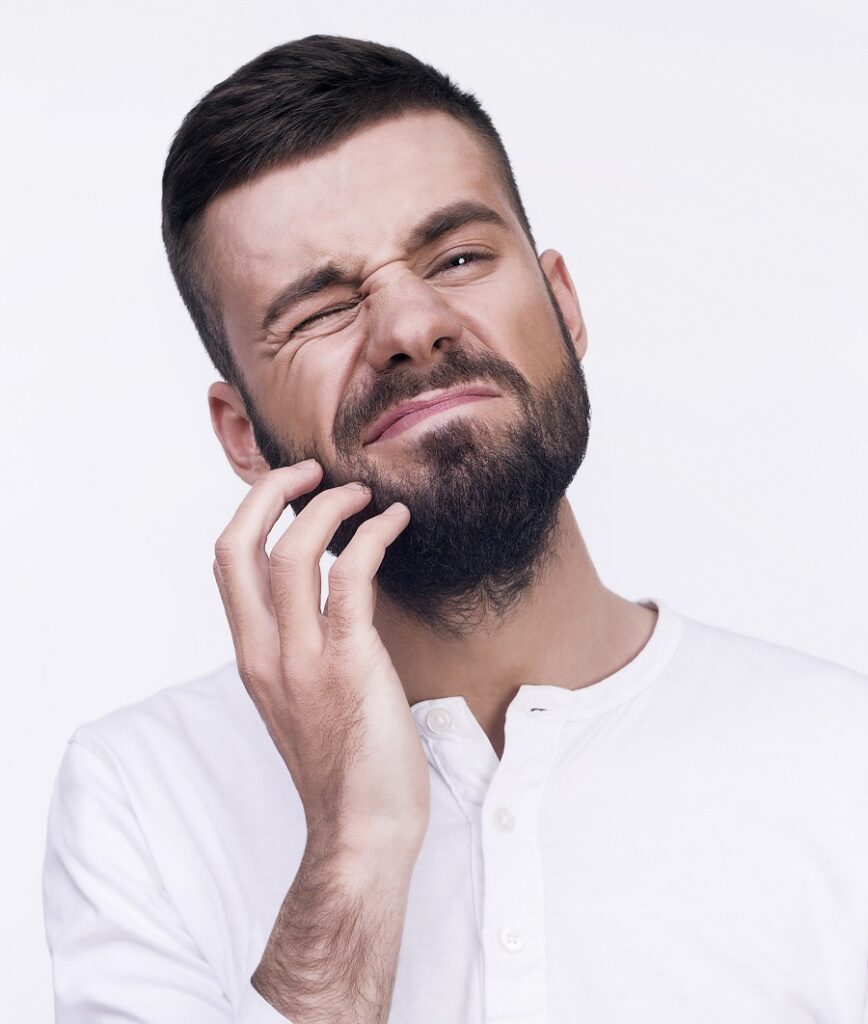
An itchy beard can be a real pain in the neck (or chin). Minoxidil might cause itchiness and redness, so be prepared with a soothing beard oil or balm.
3. Unwanted hair growth
Minoxidil might help your beard, but it could also encourage hair growth in other places, like your cheeks or forehead. Apply carefully, and always wash your hands after use.
4. Puffy face
Some Minoxidil users report facial swelling or puffiness. If you notice any unusual swelling, stop using Minoxidil and consult with a healthcare professional.
Severe Side Effects of Minoxidil
Although less common, some severe side effects may occur when using Minoxidil.
1. Allergic reactions
Allergic reactions to Minoxidil can include difficulty breathing, hives, or swelling of the face, lips, tongue, or throat. If you experience any of these symptoms, discontinue use.
2. Rapid heartbeat
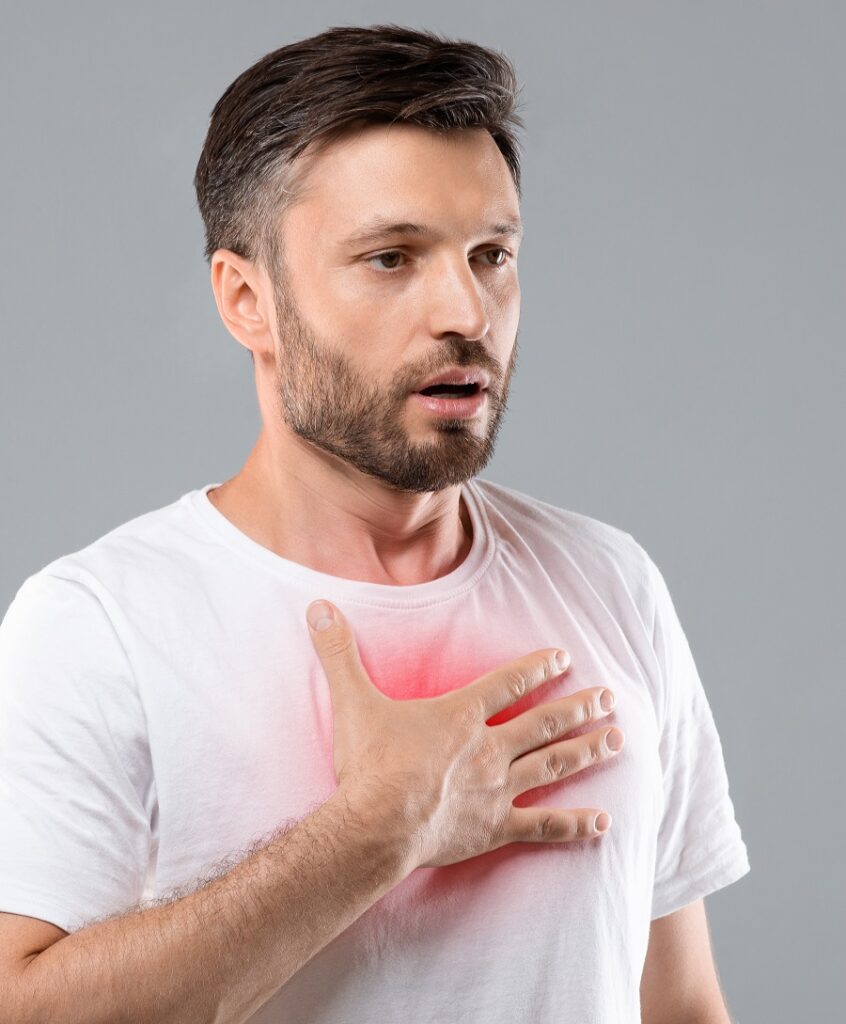
In rare cases, Minoxidil causes rapid heartbeat or palpitations. If your heart’s racing, stop using the medication and seek medical advice right away.
3. Chest pain
Chest pain or discomfort can be a serious side effect of Minoxidil. If you experience chest pain while using this medication, stop using it immediately and consult with a healthcare professional.
4. Swelling of extremities
Swelling in the hands, feet, or lower legs may occur as a side effect of Minoxidil. If you notice any unusual swelling, contact your doctor as soon as possible.
Precaution To Dodge Minoxidil Side Effects
Here are some tips to dodge the side effects of minoxidil:
- Follow the rules: Stick to the recommended dosage, because more isn’t always better, my friend.
- Patch test: Try a small area first to see if your skin throws a fit before going all in.
- Wash your hands: After applying, give your hands a thorough wash to avoid spreading Minoxidil to other areas.
- Keep it contained: Apply Minoxidil only where you want hair growth. Don’t let it wander!
- Don’t double up: Did you miss a dose? No biggie. Don’t overcompensate by using extra Minoxidil.
- Consult a pro: Talk to a healthcare professional before starting Minoxidil, especially if you have other medical conditions.
- Keep it away from kids: Store Minoxidil where children can’t get to it to prevent accidents.
Minoxidil Alternatives
If Minoxidil’s side effects scare you or it’s not working, check out these alternatives:
Biotin: Beard’s Best Friend
Biotin is a popular vitamin supplement for hair, skin, and nail health. It’s believed to strengthen hair follicles, which could lead to a fuller, thicker beard. Pop a biotin supplement daily and let your beard bask in its benefits.
Microneedling: The Prickly Path to a Full Beard
Microneedling, also known as derma rolling, involves rolling tiny needles across your skin. It sounds scary, but it’s believed to boost circulation and stimulate hair growth. Grab a derma roller, roll it gently across your beard area, and let the healing begin.
Natural Alternatives
Peppermint Oil: A Minty Mane Miracle
It is known for its invigorating aroma, but it might also stimulate hair growth. Mix a few drops with a carrier oil (like jojoba or almond oil), massage it into your beard, and let the tingling work its magic.
Castor Oil: The Thickening Trickster
It is thick, rich, and packed with nourishing goodness. It is said to moisturize your beard and promote hair growth. Rub a little castor oil between your palms and work it into your beard daily for the best results.
Healthy Lifestyle: Beard Growth from the Inside Out
Don’t forget that a healthy lifestyle can work wonders for your beard. Eating a balanced diet, getting enough sleep, and exercising regularly can all contribute to better hair growth. Treat your body right, and your beard will thank you!
How long does it take to see results with Minoxidil?
Minoxidil users typically start to see results within 2-3 months of consistent use, with more significant improvements becoming noticeable after 6-12 months.
What happens if I stop using Minoxidil on my beard?
If you discontinue Minoxidil use, your beard growth may slow down, and some of the gains you achieved while using the product could potentially be lost. However, this varies from person to person and is influenced by factors such as genetics and the type of hair growth stimulated.
Do natural alternatives work as well as Minoxidil?
Some alternatives may not be as effective as Minoxidil. Natural alternatives take more time to show results as well. So, try different options and see what works best for you.
While Minoxidil might be a popular choice for beard growth, it’s not the only option. Avoid the side effects of minoxidil. Explore alternatives like biotin, peppermint oil, castor oil, and a healthy lifestyle to see what works best for you.
So, Is Minoxidil Beard Permanent?
Well, the answer is both yes and no. It is permanent if your facial hair becomes terminal. On the other hand, some studies also say that minoxidil beard gains might not be permanent. There is no guarantee that your beard will keep on growing like it did when you were using it. So, it’s a kind of gambling.
Recommended For You:


